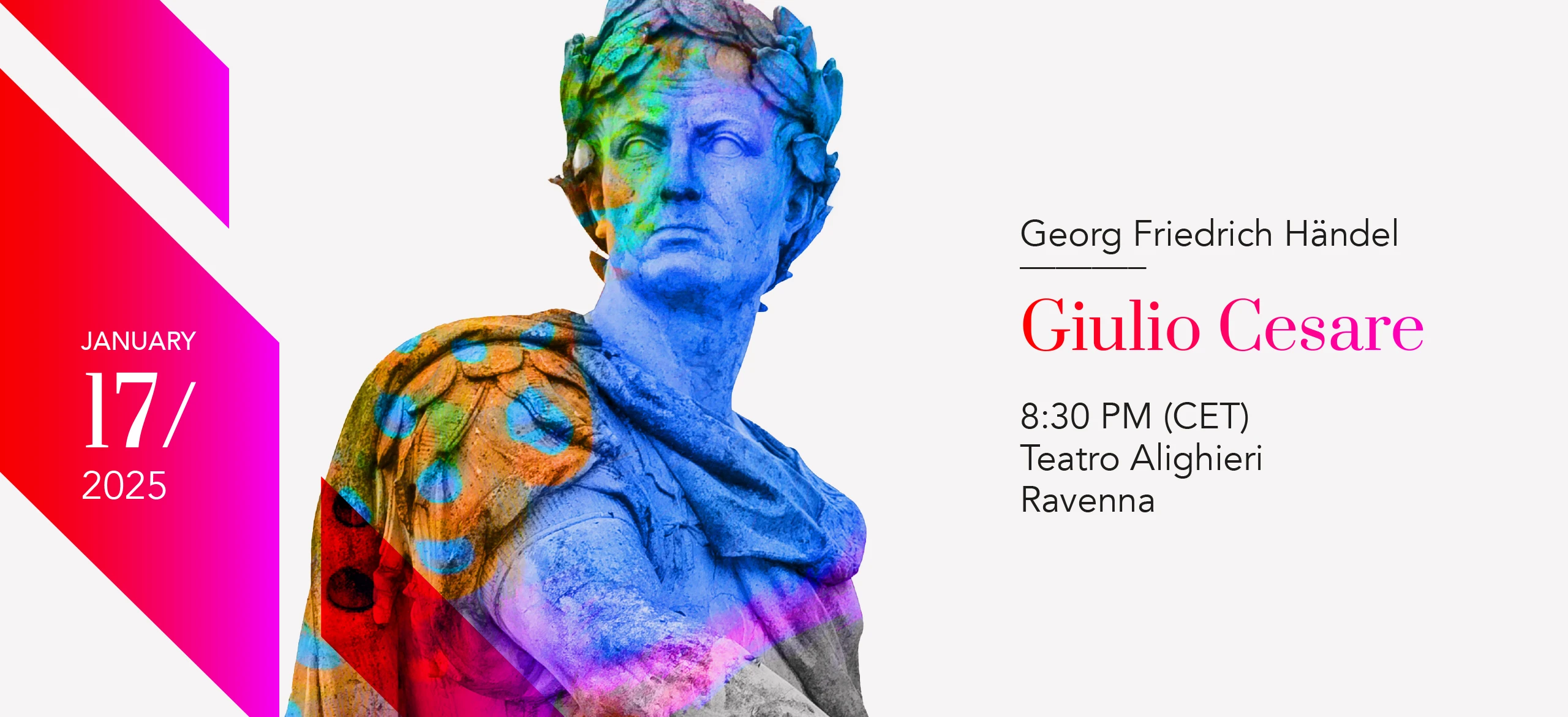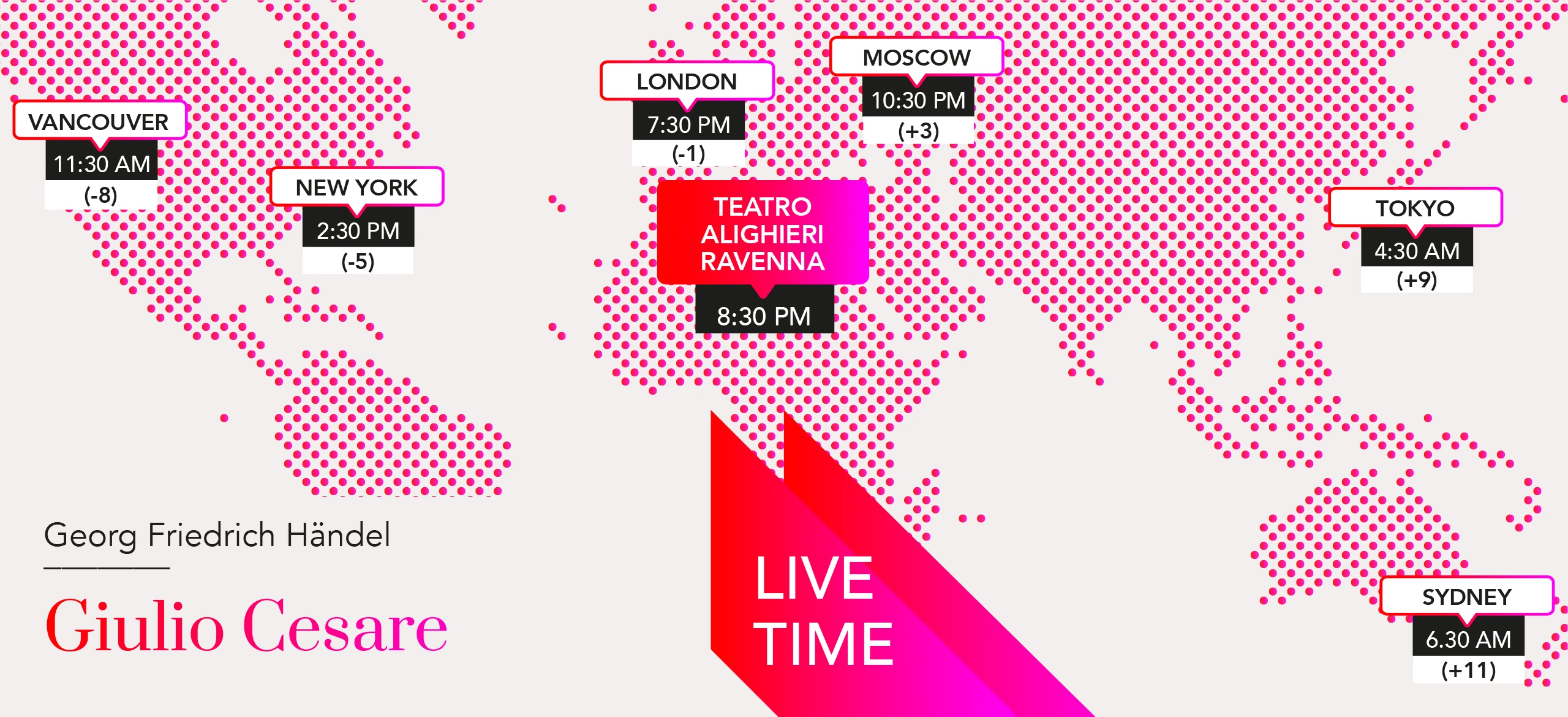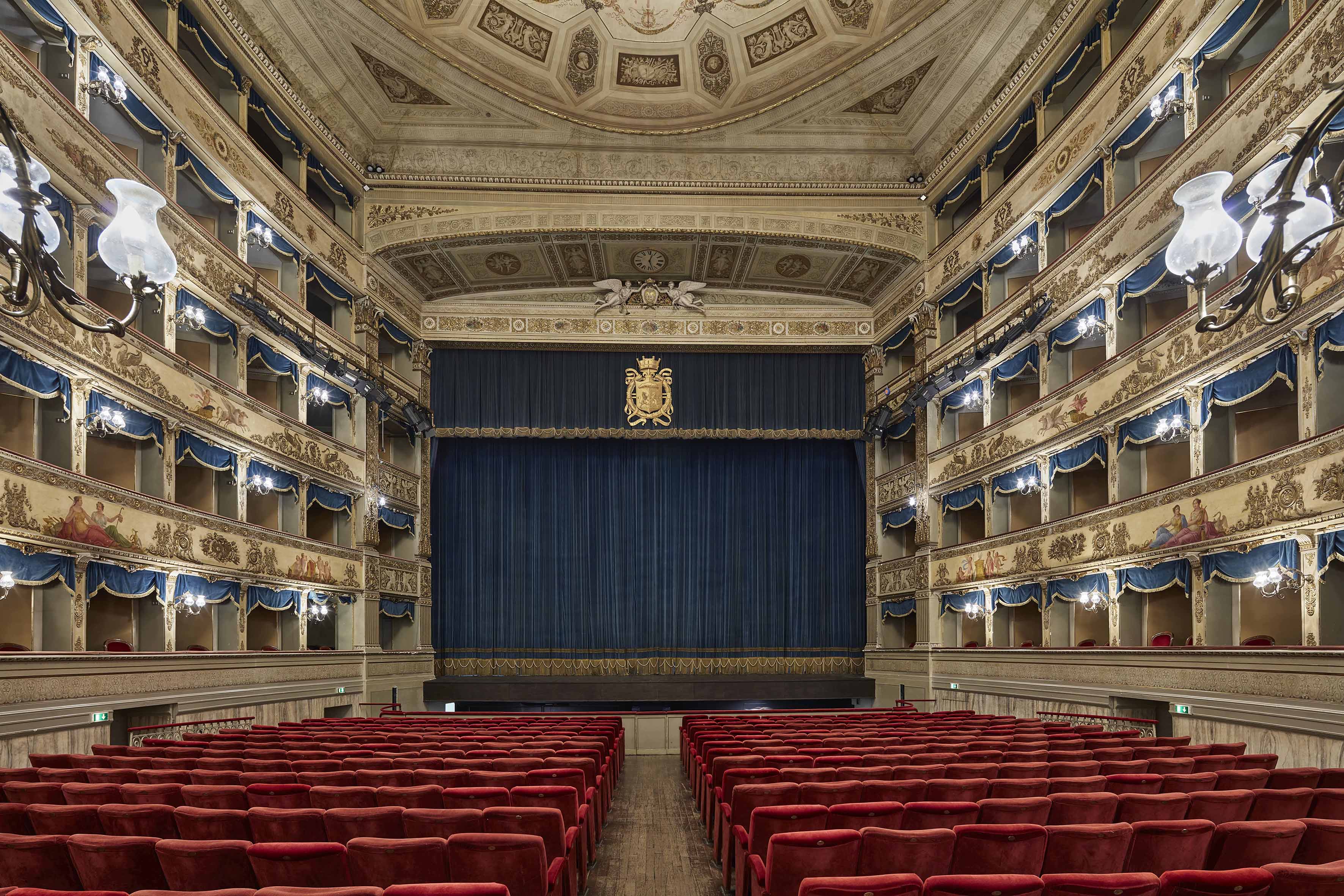

THE STREAMING WILL BE AVAILABLE UNTIL
17 July 2025
Giulio Cesare
Musical drama in three acts
Libretto by Nicola Francesco Haym
from “Giulio Cesare in Egitto” by Giacomo Francesco Bussani
Music by Georg Friedrich Händel
First performance: King’s Theatre, London, February 20, 1724
(Critical edition curated by Bernardo Ticci)
Cast:
Giulio Cesare: Raffaele Pe
Cleopatra: Marie Lys
Achilla: Davide Giangregorio
Cornelia: Delphine Galou
Tolomeo: Filippo Mineccia
Sesto: Federico Fiorio
Nireno: Andrea Gavagnin
Curio: Clemente Antonio Daliotti
Mime-actors:
Martina Bassi, Giordano Boschi, Marko Bukaqeja, Stefano Francasi, Letizia Giannoccaro, Santo Marino, Alessandra Martino, Nicolò Matricardi, Luca Montresor, Maya Quattrini, Davide Riboldi.
Conductor on harpsichord: Ottavio Dantone
Director: Chiara Muti
Set design: Alessandro Camera
Costumes: Tommaso Lagattolla
Lighting designer: Vincent Longuemare
Accademia Bizantina
A new production by Teatro Alighieri in Ravenna
Co-produced with Teatro Comunale Pavarotti-Freni in Modena, Fondazione Teatri Piacenza, Fondazione I Teatri di Reggio Emilia, Teatro del Giglio in Lucca, and Fondazione Haydn in Bolzano and Trento.
GIULIO CESARE: HÄNDEL OPENS THE OPERA SEASON AT TEATRO ALIGHIERI IN RAVENNA
A metaphysical space, tinged with the golden hues of Egypt’s sands, precious metals, and the enigmatic faces of pharaohs’ masks: this is how Chiara Muti envisions the new production of Händel’s Giulio Cesare. Following Tamerlano in 2023 and the Autumn Trilogy of 2024, the fruitful collaboration with Accademia Bizantina and Ottavio Dantone continues, bringing the melodramatic repertoire of the 17th and early 18th centuries—less frequently performed than that of later periods—back to the Teatro Alighieri stage.
The role of Giulio Cesare has been entrusted to Raffaele Pe, while Cleopatra is portrayed by Marie Lys. Delphine Galou takes on the role of Cornelia, the wife of Pompey, while Tolomeo, Cleopatra’s brother and rival for the throne of Egypt, is played by Filippo Mineccia. Completing the cast are Davide Giangregorio as Achilla, Federico Fiorio as Sesto, Andrea Gavagnin as Nireno, and Clemente Antonio Daliotti as Curio. The set design is by Alessandro Camera, with costumes by Tommaso Lagattolla and lighting by Vincent Longuemare. After its debut in Ravenna, the new production will tour the co-producing theaters in Modena, Piacenza, Reggio Emilia, Lucca, and Bolzano.
“Giulio Cesare is an opera everyone should know because it perfectly merges history and myth and achieves the ultimate harmony between music and theater,” says Ottavio Dantone, who will conduct Accademia Bizantina from the harpsichord. “Händel’s masterpiece captivates with its remarkable variety of timbres and colors: harp, theorbo, viola da gamba, oboes, flute, and horn enrich the orchestra, accompanying the multifaceted characters. The musical content, rich in imagery and extraordinary evocative power, immerses us directly into the story as if we were living it ourselves.”
The Baroque Caesar is “a symbol of marble-like justice and temperance,” notes Chiara Muti. “He is unambiguous, dehumanized to glorify, in the apotheosis of Rome, the virtues of an enlightened monarch,” namely George I and the new Hanoverian dynasty, whom Händel intended to honor with the opera premiered at the King’s Theatre in London in 1724. “Thanks to the intensity of the vocal lines and the chromatic dynamism of the orchestra,” the director adds, “Händel redeems the static nature of the action and enriches the characters with meaning. By delving into the human condition and revealing its complexity and contradictions, he gives us moments of such emotional tension that we can say he achieved with music what Shakespeare achieved with words. The direction, enhanced by the melody, yields to a symbolic and evocative dimension.”
Extra
LIVE FROM

TEATRO ALIGHIERI DI RAVENNA
Early nineteenth century: after more than one hundred years of life the Communicative Theatre, made entirely out of wood, was collapsing and the Public Administration decided to build a new facility. The first step was to identify an adequate area: Piazzetta Degli Svizzeri, a squalid square surrounded by slums but placed at the very heart of the city, was the chosen place. In 1838, the project was entrusted to two architects from Veneto, the brothers Tomaso and Giovan Batista Maduna. The former had ministered to the restauration of La Fenice, the most famous theatre in Venice, which had been partially destroyed by a fire. Tomaso Meduna also signed the project of the first railway bridge connecting Venice to the mainland. Under the lead of the two architects, the building which resulted was a neoclassical structure very similar to the Venetian theatre. The apostolic delegate Monsignor Stefano Rossi suggested to dedicate the theatre to Dante Alighieri.

Media partner

OperaStreaming
Project coordinator
Fondazione Teatro Comunale di Modena
Via del Teatro 8 - 41121 Modena
P.IVA e CF 02757090366
info@teatrocomunalemodena.it
Tel. 059 - 2033020


